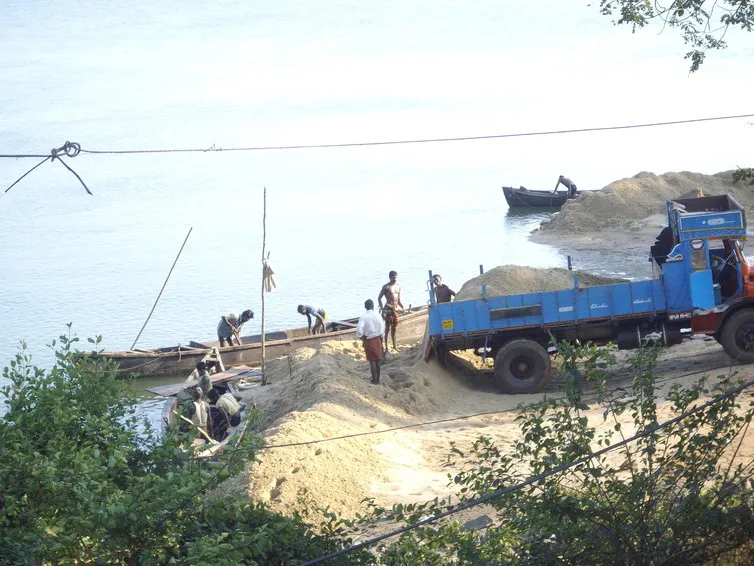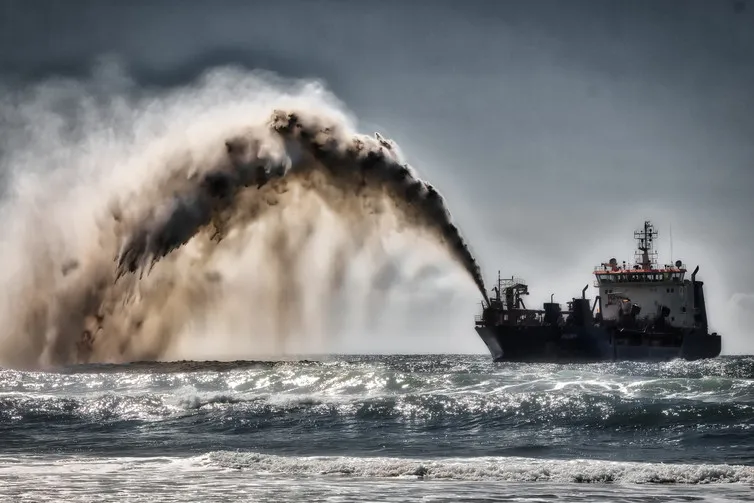The World is Running Out of Sand
The little-known exploitation of this seemingly infinite resource could wreak political and environmental havoc
/https://tf-cmsv2-smithsonianmag-media.s3.amazonaws.com/filer/68/07/68073882-7d72-4600-8581-1932d355f87f/cr0rj3.jpg)
When people picture sand spread across idyllic beaches and endless deserts, they understandably think of it as an infinite resource. But as we discuss in a just-published perspective in the journal Science, over-exploitation of global supplies of sand is damaging the environment, endangering communities, causing shortages and promoting violent conflict.
Skyrocketing demand, combined with unfettered mining to meet it, is creating the perfect recipe for shortages. Plentiful evidence strongly suggests that sand is becoming increasingly scarce in many regions. For example, in Vietnam domestic demand for sand exceeds the country’s total reserves. If this mismatch continues, the country may run out of construction sand by 2020, according to recent statements from the country’s Ministry of Construction.
This problem is rarely mentioned in scientific discussions and has not been systemically studied. Media attention drew us to this issue. While scientists are making a great effort to quantify how infrastructure systems such as roads and buildings affect the habitats that surround them, the impacts of extracting construction minerals such as sand and gravel to build those structures have been overlooked. Two years ago we created a working group designed to provide an integrated perspective on global sand use.
In our view, it is essential to understand what happens at the places where sand is mined, where it is used and many impacted points in between in order to craft workable policies. We are analyzing those questions through a systems integration approach that allows us to better understand socioeconomic and environmental interactions over distances and time. Based on what we have already learned, we believe it is time to develop international conventions to regulate sand mining, use and trade.

**********
Sand and gravel are now the most-extracted materials in the world, exceeding fossil fuels and biomass (measured by weight). Sand is a key ingredient for concrete, roads, glass and electronics. Massive amounts of sand are mined for land reclamation projects, shale gas extraction and beach renourishment programs. Recent floods in Houston, India, Nepal and Bangladesh will add to growing global demand for sand.
In 2010, nations mined about 11 billion tonnes of sand just for construction. Extraction rates were highest in the Asia-Pacific region, followed by Europe and North America. In the United States alone, production and use of construction sand and gravel was valued at $8.9 billion in 2016, and production has increased by 24 percent in the past five years.
Moreover, we have found that these numbers grossly underestimate global sand extraction and use. According to government agencies, uneven record-keeping in many countries may hide real extraction rates. Official statistics widely underreport sand use and typically do not include nonconstruction purposes such as hydraulic fracturing and beach nourishment.

Sand traditionally has been a local product. However, regional shortages and sand mining bans in some countries are turning it into a globalized commodity. Its international trade value has skyrocketed, increasing almost sixfold in the last 25 years.
Profits from sand mining frequently spur profiteering. In response to rampant violence stemming from competition for sand, the government of Hong Kong established a state monopoly over sand mining and trade in the early 1900s that lasted until 1981.
Today organized crime groups in India, Italy and elsewhere conduct illegal trade in soil and sand. Singapore’s high-volume sand imports have drawn it into disputes with Indonesia, Malaysia and Cambodia.
**********
The negative consequences of overexploiting sand are felt in poorer regions where sand is mined. Extensive sand extraction physically alters rivers and coastal ecosystems, increases suspended sediments and causes erosion.
Research shows that sand mining operations are affecting numerous animal species, including fish, dolphins, crustaceans and crocodiles. For example, the gharial (Gavialis gangeticus) – a critically endangered crocodile found in Asian river systems – is increasingly threatened by sand mining, which destroys or erodes sand banks where the animals bask.
Sand mining also has serious impacts on people’s livelihoods. Beaches and wetlands buffer coastal communities against surging seas. Increased erosion resulting from extensive mining makes these communities more vulnerable to floods and storm surges.
A recent report by the Water Integrity Network found that sand mining exacerbated the impacts of the 2004 Indian Ocean tsunami in Sri Lanka. In the Mekong Delta, sand mining is reducing sediment supplies as drastically as dam construction, threatening the sustainability of the delta. It also is probably enhancing saltwater intrusion during the dry season, which threatens local communities’ water and food security.
Potential health impacts from sand mining are poorly characterized but deserve further study. Extraction activities create new standing pools of water that can become breeding sites for malaria-carrying mosquitoes. The pools may also play an important role in the spread of emerging diseases such as Buruli ulcer in West Africa, a bacterial skin infection.
**********
Media coverage of this issue is growing, thanks to work by organizations such as the United Nations Environment Programme, but the scale of the problem is not widely appreciated. Despite huge demand, sand sustainability is rarely addressed in scientific research and policy forums.
The complexity of this problem is doubtlessly a factor. Sand is a common-pool resource – open to all, easy to get and hard to regulate. As a result, we know little about the true global costs of sand mining and consumption.
Demand will increase further as urban areas continue to expand and sea levels rise. Major international agreements such as the 2030 Agenda for Sustainable Development and the Convention on Biological Diversity promote responsible allocation of natural resources, but there are no international conventions to regulate sand extraction, use and trade.
As long as national regulations are lightly enforced, harmful effects will continue to occur. We believe that the international community needs to develop a global strategy for sand governance, along with global and regional sand budgets. It is time to treat sand like a resource, on a par with clean air, biodiversity and other natural endowments that nations seek to manage for the future.
This article was originally published on The Conversation.
Aurora Torres, Postdoctoral Research Fellow in Ecology, German Centre for Integrative Biodiversity Research
Jianguo "Jack" Liu, Rachel Carson Chair in Sustainability, Michigan State University
Jodi Brandt, Assistant Professor - Human Environment Systems, Boise State University
Kristen Lear, Ph.D. Candidate, University of Georgia